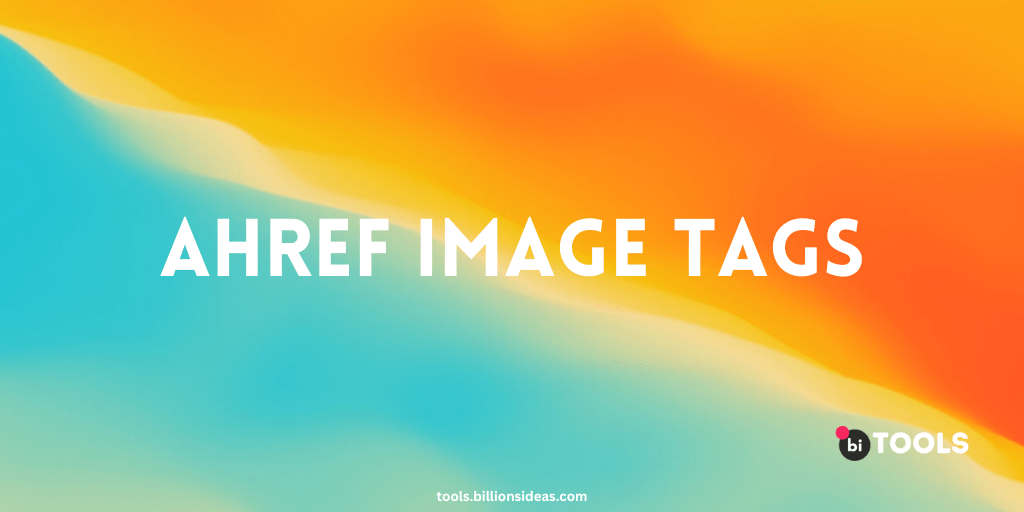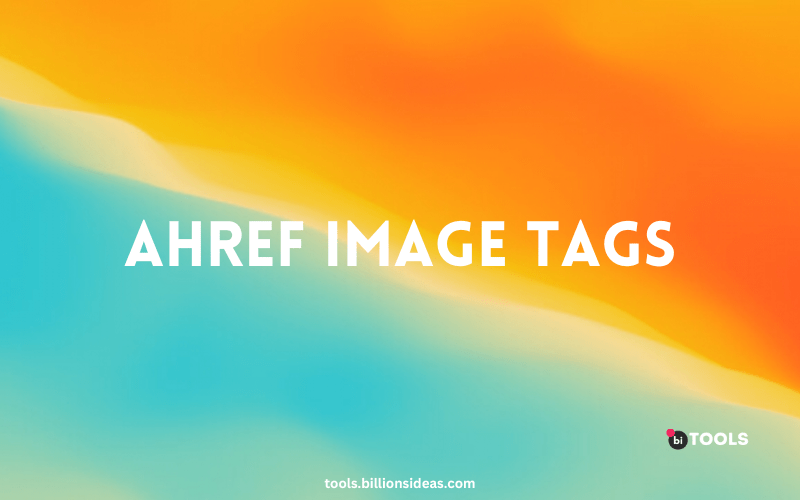HTML & Ahref Tags For Image

Whether you’re a website owner, blogger, or content creator, it’s essential to optimize your images for both search engines and accessibility. This article will delve into the world of HTML and Ahref tags for images, explaining their importance and providing best practices for implementing them effectively.
When it comes to web development and content creation, HTML (Hypertext Markup Language) is the backbone of every webpage. It provides structure and defines the elements within a document. Ahref tags, on the other hand, are HTML attributes used for creating hyperlinks. While primarily associated with the text, Ahref tags can also be utilized to enhance images on a website.
Contents
HTML tags are elements that define the structure and format of content on a webpage. These tags are enclosed within angle brackets (< >) and consist of an opening tag, content, and a closing tag. They enable web browsers to interpret and display content correctly. Ahref tags, specifically, are used to create clickable links within HTML documents.
The HTML <img> tag
To include an image on your webpage, you can use the HTML <img> tag. This tag is self-closing, meaning it doesn’t require a closing tag. Here’s an example:
htmlCopy code<img src="image.jpg" alt="Description of the image">
The src the attribute specifies the path to the image file, while the alt attribute contains the alternative text that will be displayed if the image fails to load or for users who can’t see the image.
Alt attribute
The alt attribute within the <img> the tag provides a concise and descriptive alternative text for an image. It should convey the purpose and context of the image. Additionally, search engines utilize this attribute to understand the content of the image. It is considered best practice to include the alt attribute for every image.
Title attribute
The title attribute is another HTML tag attribute that can be used to provide additional information about an image. When a user hovers over an image, the title text is displayed as a tooltip. While not directly related to SEO, the title attribute can be valuable for providing extra context or details about the image.
Ahref attribute
The Ahref attribute is commonly associated with hyperlinks, but it can also be used in conjunction with images. By wrapping an <img> tag with an <a> tag, you can create a clickable image. Here’s an example:
htmlCopy code<a href="https://example.com">
<img src="image.jpg" alt="Description of the image">
</a>
When a user clicks on the image, they will be redirected to the URL specified in the href attribute.
Benefits of Using Ahref Tag
Utilizing Ahref tags for images provides several benefits. Firstly, it enhances the user experience by allowing users to click on images for additional information or to view a larger version. Secondly, it can improve the navigational structure of a website, enabling users to easily navigate between pages. Lastly, it can contribute to SEO efforts by providing internal links and improving the overall linking structure of the website.
Enhancing accessibility
One of the primary reasons for using HTML and Ahref tags for images is to improve accessibility. Not all users can perceive visual content, whether due to visual impairments or technical limitations. By utilizing HTML tags, you can provide alternative text descriptions that screen readers can read aloud to visually impaired users, allowing them to understand the context of the images.
Improving SEO
In addition to accessibility, HTML and Ahref tags play a crucial role in search engine optimization (SEO). Search engines rely on textual content to understand the relevance and context of a webpage. By using descriptive alt text and relevant keywords within HTML tags, you can enhance the discoverability of your images in search engine results, driving more organic traffic to your website.
- BI TOOL : As the name suggests, this tool is specifically designed for optimizing JPEG images. It allows you to adjust the compression level and preview the results before saving.
- TinyPNG : A tool for compressing and optimizing PNG images. It reduces file sizes without sacrificing image quality.
- Compressor.io: This tool supports various image formats like JPEG, PNG, GIF, and SVG. It helps reduce file sizes while maintaining good image quality.
- ImageOptim : A tool for optimizing and compressing images. It’s available for macOS and Windows, and it can be integrated into your workflow for automatic optimization.
- Kraken.io : This online tool optimizes and compresses images without compromising their quality. It supports various image formats and offers both manual and automatic optimization options.
Conclusion
HTML and Ahref tags offer valuable tools for optimizing images on your website. By using descriptive alt text, meaningful titles, and properly linking images, you can enhance both the accessibility and SEO of your visual content. Implementing these best practices will ensure that your images are not only visually appealing but also inclusive and discoverable by search engines.
FAQs
HTML and Ahref tags are widely supported across modern web browsers. However, it’s important to ensure your website is compatible with older browser versions by using fallback options or providing alternative text.
What happens if I don’t use alt text for images?
If you omit the alt text for an image, visually impaired users relying on screen readers will not have any context about the image. Additionally, search engines may struggle to understand the image’s content, leading to lower visibility in search results.
No, Ahref tags alone cannot display images. To include images on your webpage and make them clickable, you need to use a combination of the <img> and <a> tags.
Is it necessary to use the title attribute for every image?
The title attribute is not necessary for every image. It can provide additional information or context, but it’s not a requirement for proper image functionality.
While Ahref tags are commonly used for creating clickable images, there are alternative methods, such as using JavaScript or CSS, to achieve similar functionality. However, Ahref tags remain a widely supported and accessible approach.
